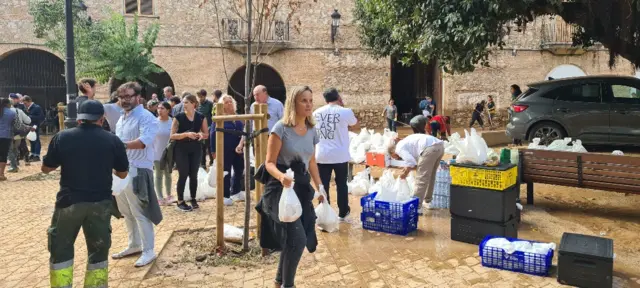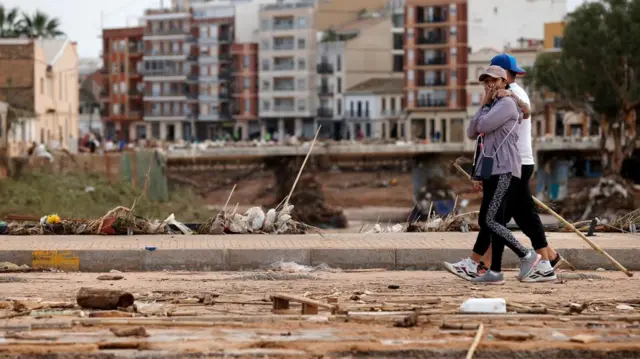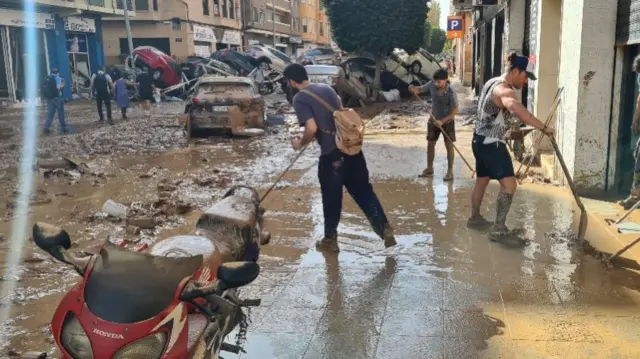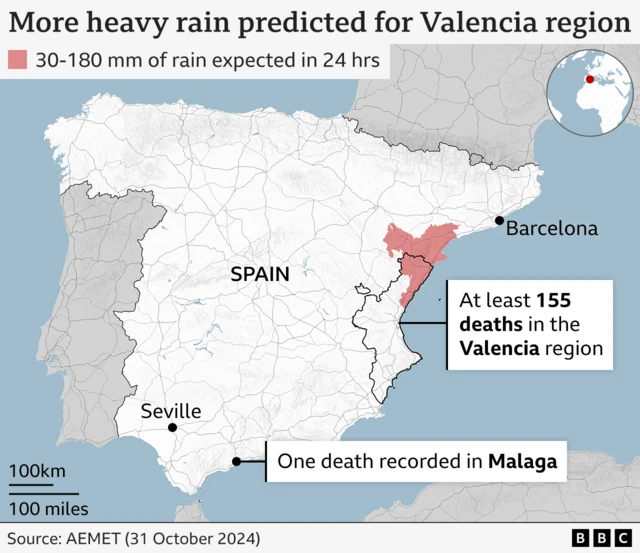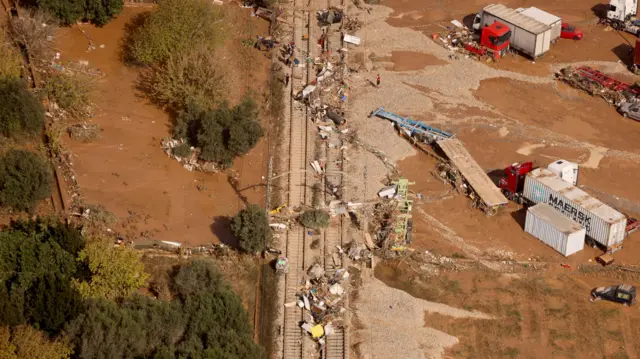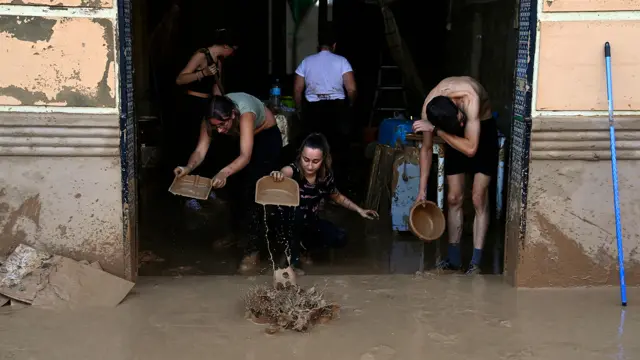Scenes of devastation as death toll rises to 158 in Spainpublished at 18:24 GMT 31 October 2024
Spain is still reeling from the deadly impact of its worst flooding disaster in decades. At least 158 people are confirmed dead and dozens are missing.
Near Valencia, we saw more than a year's worth of rainfall in just eight hours on Wednesday, causing devastating flash-flooding.
Search and rescue operations are still ongoing for those missing. Rebuilding the damaged areas will take untold weeks or months, and for now, emergency crews are grappling with inaccessible areas that have been cut off by the damage.
Residents have described "nightmare" scenes, with one Valencia resident telling our reporter that all locals now "know someone who has died".
Prime Minister Pedro Sánchez warned residents in affected areas to "stay home", echoing an earlier statement from King Felipe VI who said the emergency is "not over".
More rain is expected to fall on Friday, posing risk of new flooding, since the ground is already saturated with water.
We'll be ending our live coverage shortly, but you can read more on this story across our website:
- The weather conditions that caused devastating flash flooding in Spain
- In pictures: Devastating images from Spain's floods
- Latest news: Spain mourns as death toll soars past 150
Watch: Deadly floods leave trail of destruction in southern Spain


